Tamagoyaki is a classic and popular Japanese dish that can be made quickly with just a few ingredients. When you take a bite, the delicate and delightful flavor of the eggs spreads through your mouth. This is a Kansai-style recipe that is subtly salty, not sweet.
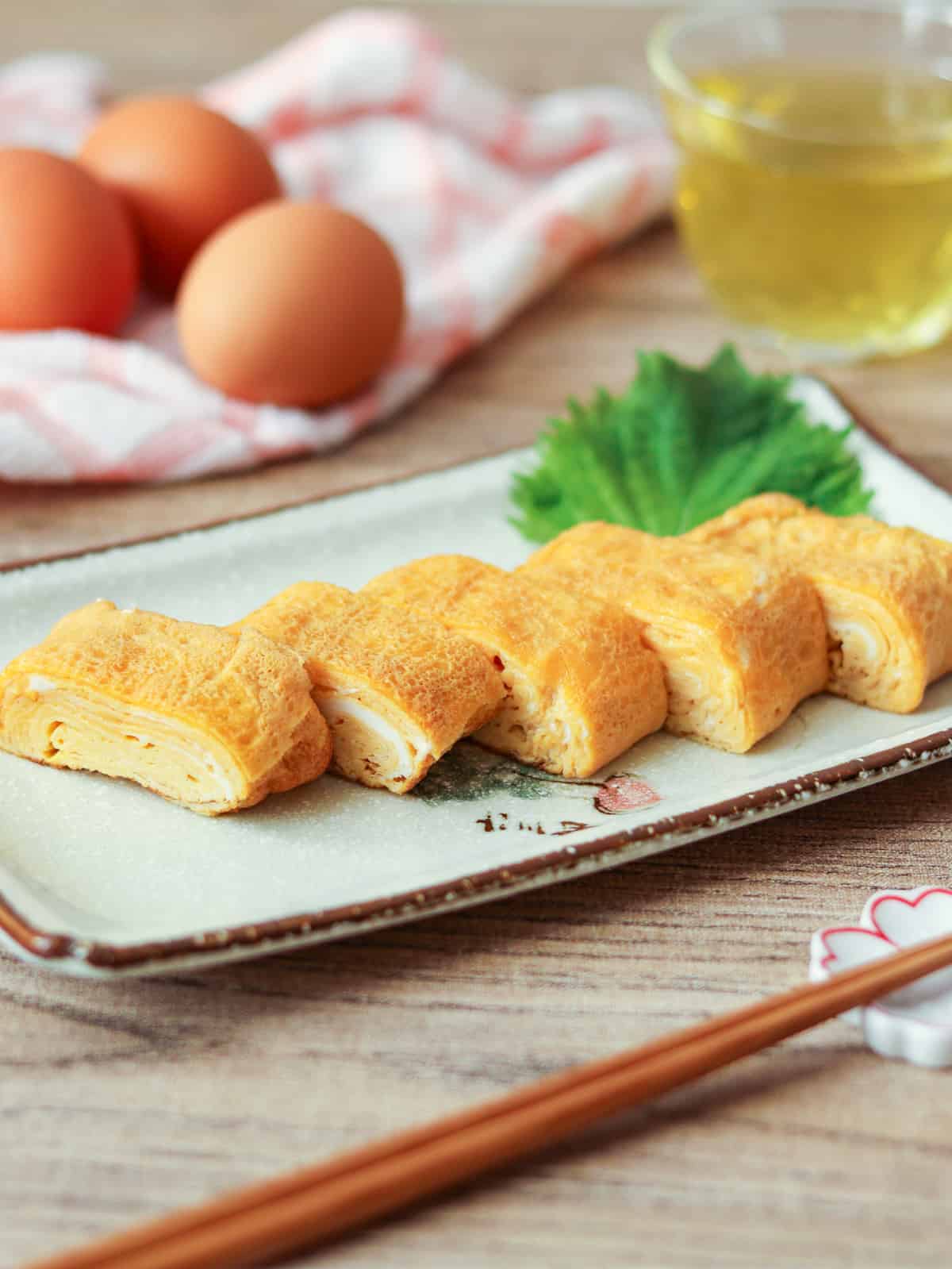
Jump to:
What is Tamagoyaki?
Tamagoyaki is a dish made by cooking a seasoned egg mixture in thin layers and rolling it up, then repeating this process until the layers become thicker. "Tamago" means egg, and "yaki" refers to cooking. It can be made quickly and requires very few ingredients.
Since it is a simple dish, it is sensitive to heat. You might not get it perfectly at first, but once you get used to it, you will find it easy to prepare. When done well, it has a fluffy texture and tastes truly delicious.
Sweet or salty?
In Japan, the flavor of tamagoyaki varies depending on the region. In the Kanto region, located in eastern Japan, many people prefer to season it with sugar (with a little soy sauce or without), while in the Kansai region, located in western Japan, it is common to season it with salt and soy sauce (with a little sugar or without). Since tamagoyaki is a dish enjoyed daily for Japanese people, differences in seasoning can sometimes lead to arguments between couples.
I live in Osaka, which is in the Kansai region, and prefer tamagoyaki that is not sweet. Therefore, I'd like to share a recipe for Kansai-style seasoning here. The subtly salty flavor has an enduring charm that never gets boring.
Flavorful twists
You can change the flavor of this dish by adding various ingredients. In Japan, it is also popular to include fillings such as cheese, green onions (scallions), nori seaweed, and beni shoga (red pickled ginger). You can also add a small amount of finely chopped vegetables. It might be interesting to incorporate locally available ingredients.
Additionally, there is tamagoyaki made with dashi stock. This is recognized as a separate dish called "Dashimaki Tamago" (Japanese rolled omelet with dashi), which is also highly recommended.
Dedicated cooking utensil
In Japan, there is a dedicated cooking utensil known as a 'tamagoyaki pan,' specifically designed for making tamagoyaki. The only difference between it and a regular frying pan is its rectangular or square shape, and almost every Japanese household that cooks has one, allowing for the easy creation of beautifully shaped tamagoyaki. Although you can make it using a normal frying pan, if you are enthusiastic about making it regularly, I highly recommend getting a tamagoyaki pan.
Tamagoyaki pans are made of various materials, which can significantly affect the quality of the finished dish. Non-stick coated ones are affordable and require less oil to use, while copper ones can be an excellent choice if you aim to create the ultimate tamagoyaki. They may be more expensive, but their high thermal conductivity results in a soft and delicate texture.
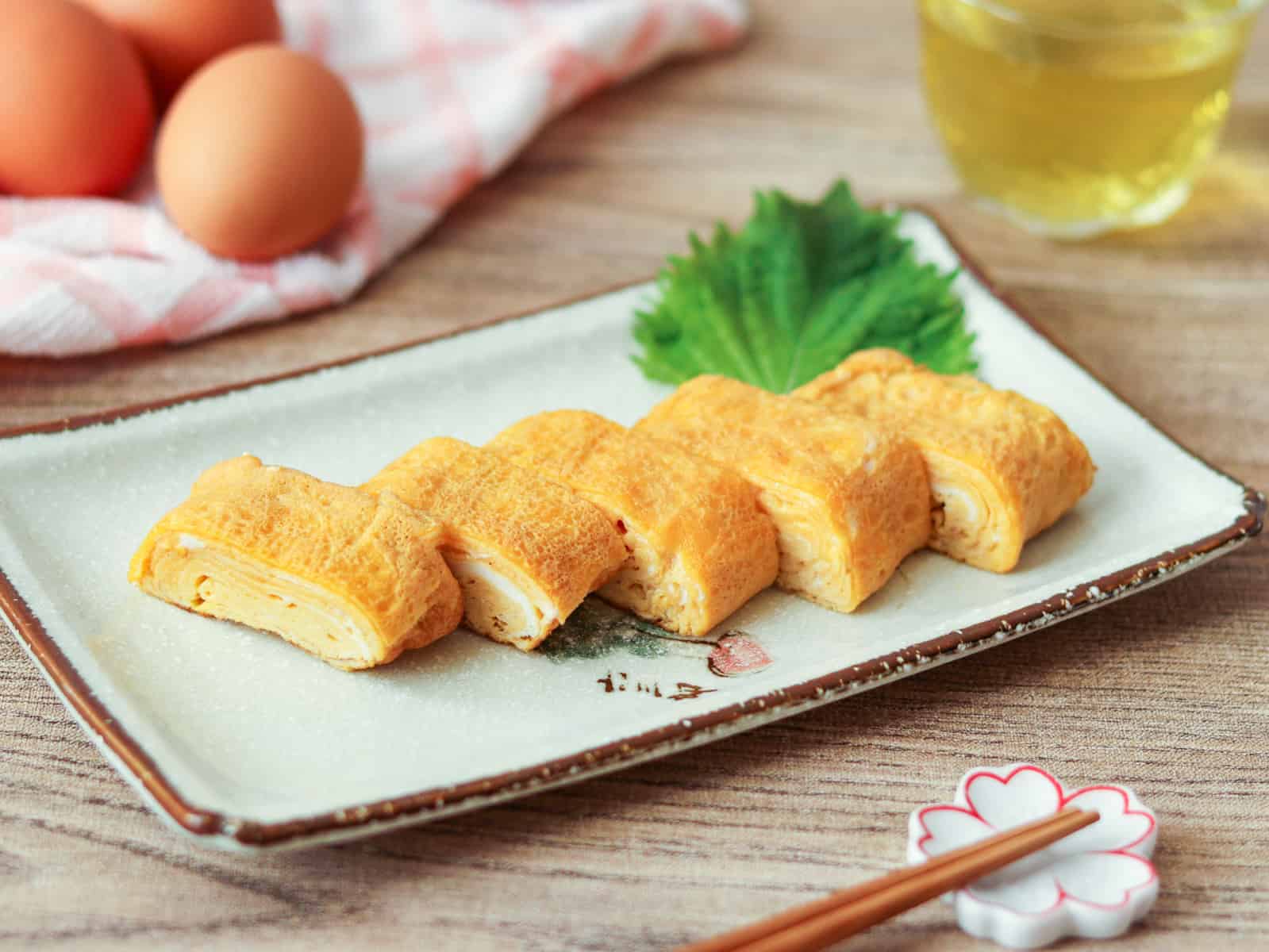
📋Step-by-step recipe
Ingredients
- 3 large eggs (about 2.1 oz/60 g each, including shell)
- a pinch of salt
- ½ tsp soy sauce
Instructions
🕒 Total: 5 minsHere, I’m making tamagoyaki using a small frying pan because I want those who don't own a 'tamagoyaki pan' (rectangular or square frying pan) to still be able to enjoy tamagoyaki. If you are enthusiastic about making this dish regularly, I highly recommend purchasing one. For more details about tamagoyaki pans, please refer to the information provided above.
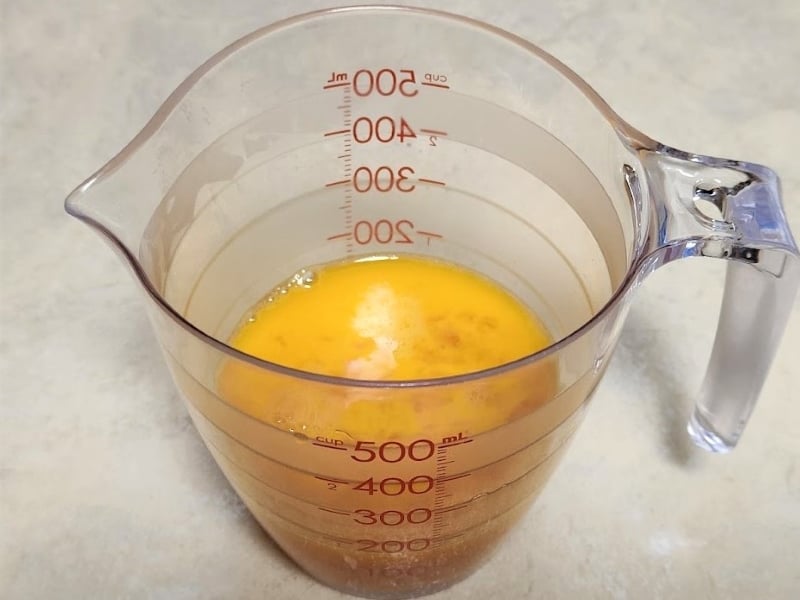
Step 1
Crack eggs into a bowl and beat them with salt and soy sauce.
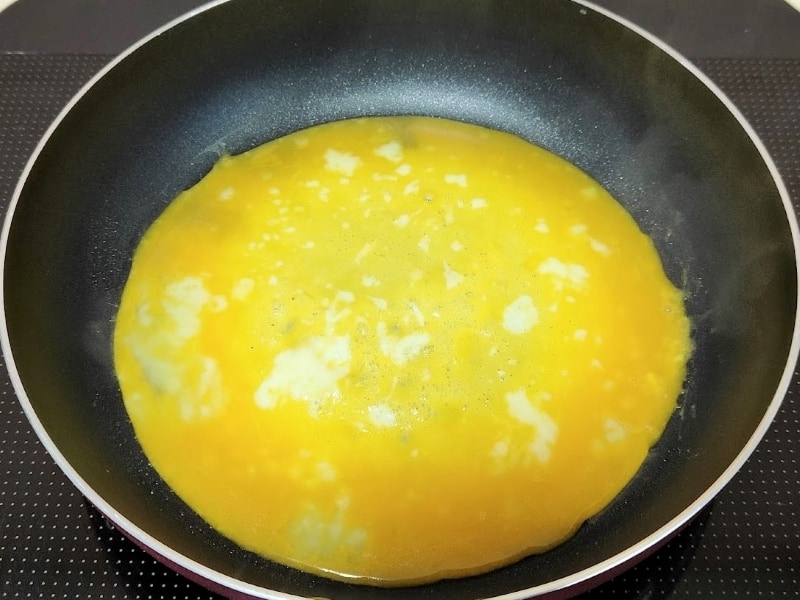
Step 2
Dip a small piece of folded paper towel in oil, then apply it to a pan. Heat the pan over high heat. Once the pan is hot, pour about a quarter of the egg mixture (for 2 servings) into the center of the pan.
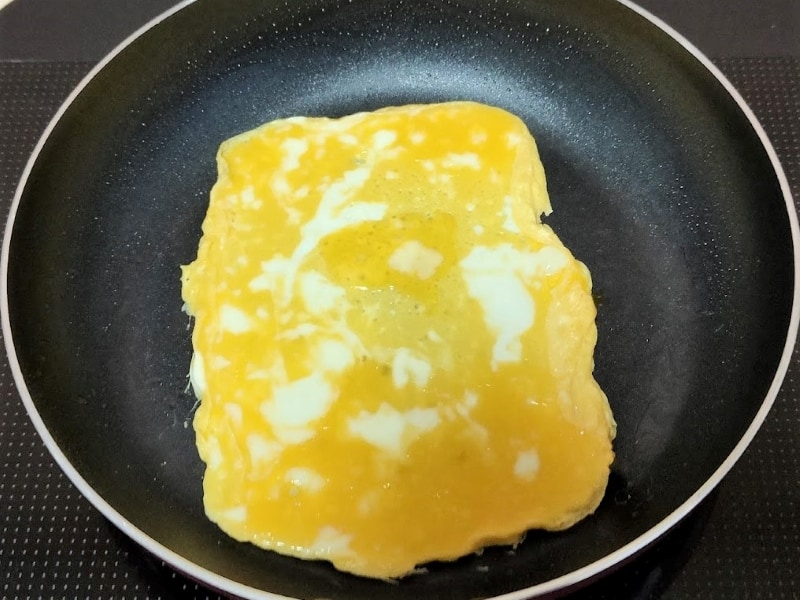
Step 3
As soon as the mixture begins to set, shape it into a rectangle (approximately 5.7 inches/14.5 cm wide and 7 inches/18 cm long). If there are large air bubbles, pierce them and fill the holes with a small amount of the egg mixture.
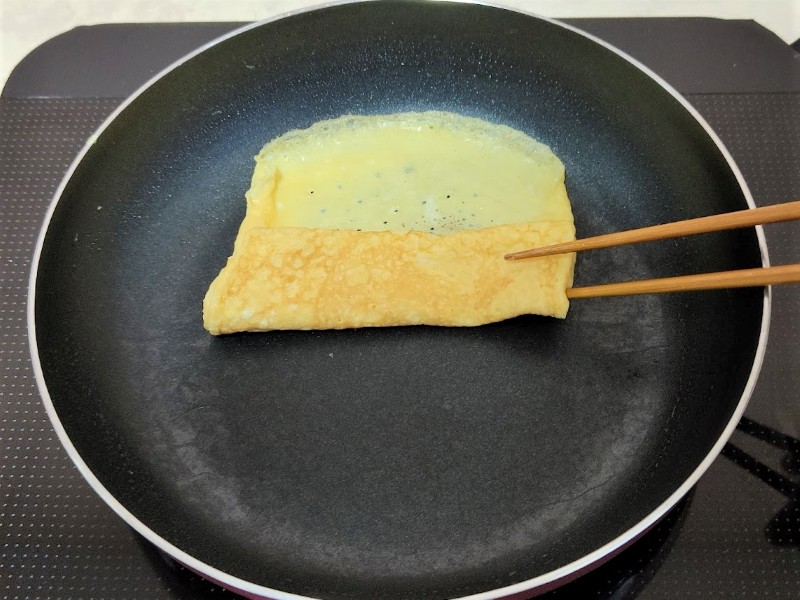
Step 4
When the mixture is almost set but still slightly runny, roll it several times using chopsticks, folding it from front to back.
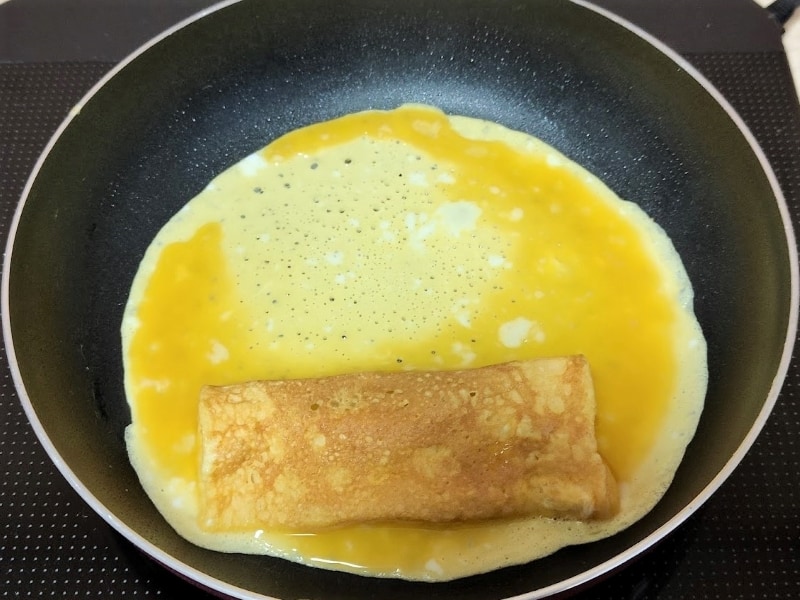
Step 5
Move the rolled egg to the front of the pan. Apply oil from the small folded paper towel to the pan, and pour an equal amount of egg mixture as in step 2 into the center of the pan.
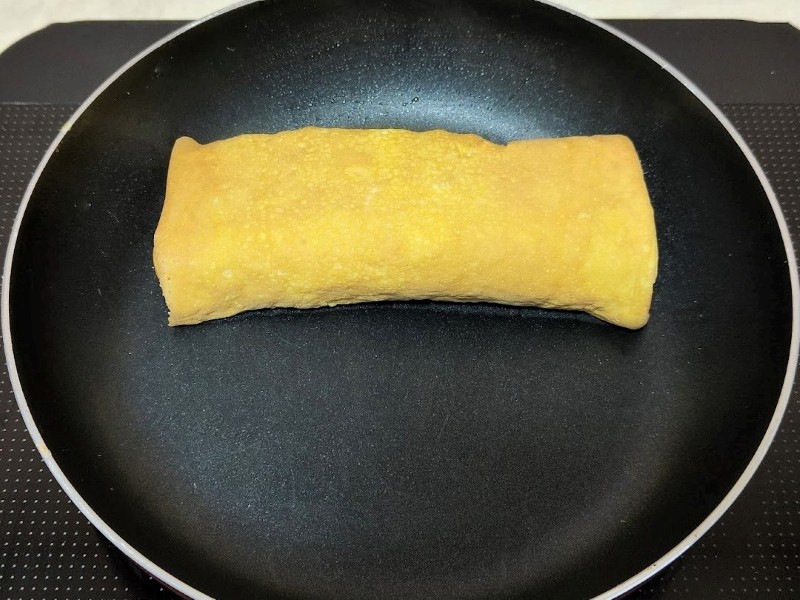
Step 6
Repeat the same process as steps 3 to 5 until all of the egg mixture is used, increasing the layers of the rolled egg. Each time you pour the egg mixture, use chopsticks to lift the rolled egg, allowing the mixture to spread underneath it.
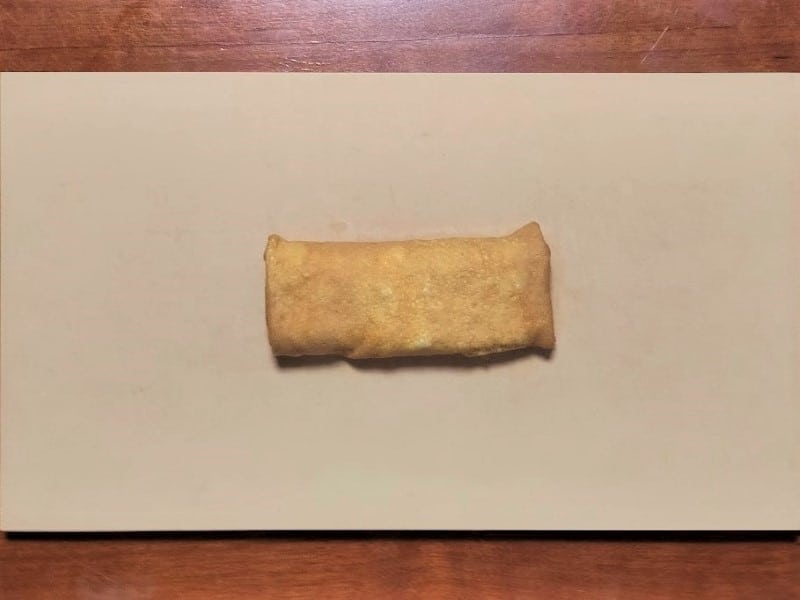
Step 7
Once it is done, remove it from the pan before it overcooks from the residual heat.
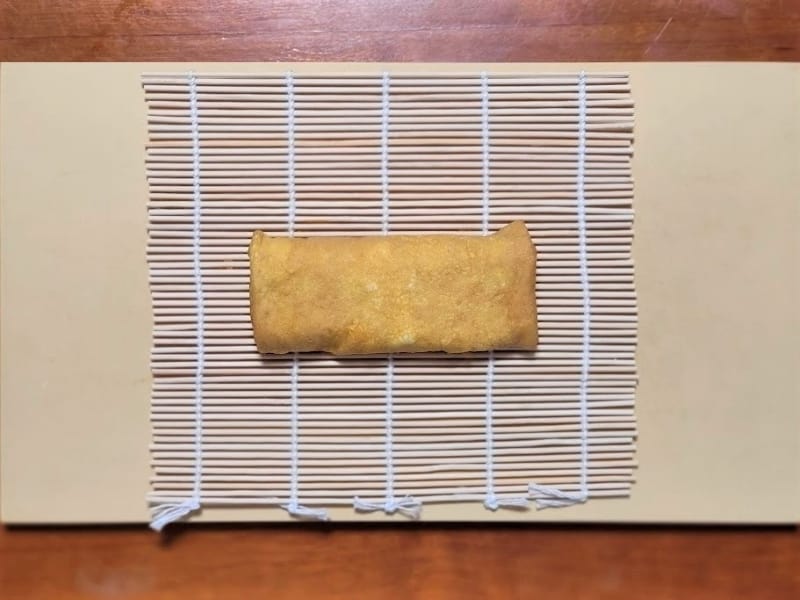
Step 8 (optional)
Place it on a sushi mat or paper towel and shape it nicely.
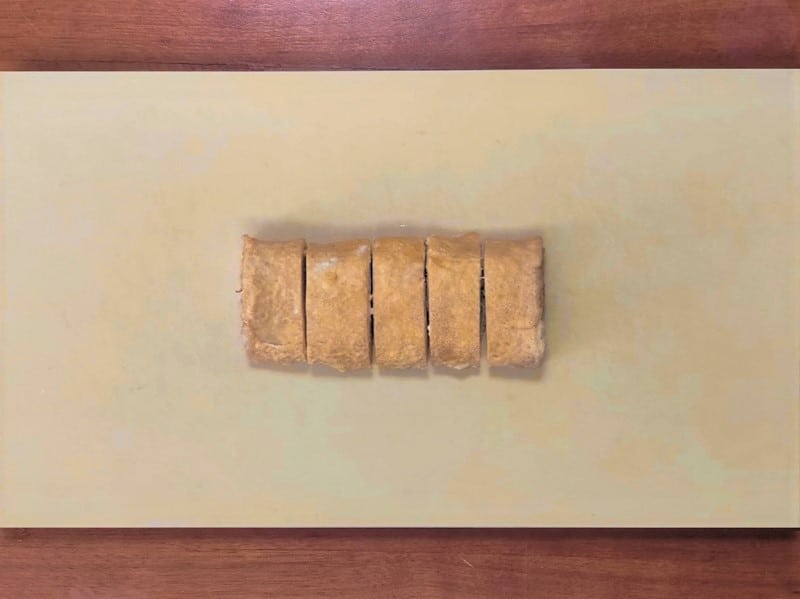
Step 9
Cut it into 1-inch (2.5 cm) pieces.
To store
You can store it in the refrigerator for up to 2 days.
Tips on how to make
Tamagoyaki is a dish that cooks quickly over high heat, so you may need some practice to make it nicely. The following tips should help you get started with making this dish.
- Apply oil to the pan each time you add the egg mixture. To avoid putting too much oil, dip a small piece of folded paper towel in oil and use it to coat the pan. Even when using a non-stick pan, it is still advisable to apply oil, as the mixture tends to stick.
- Cook the egg mixture over high heat. The high heat rapidly evaporates the moisture in the mixture and coagulates the proteins simultaneously, creating a fine texture. If you feel the heat is too intense, adjust by moving the pan away from the heat source.
- Carry out all the heating processes promptly. If the egg mixture is overcooked, it will become tough and dry.
- After cooking tamagoyaki, shaping it with a sushi mat or paper towel is typically not practiced in Japanese households, but is often done in restaurants. It is also suitable for cooking in a frying pan.
If you try this recipe, I’d love to hear what you think. Please consider leaving a review and star rating in the comments below. If you enjoyed it, I’d really appreciate it if you shared it with your friends.
Recipe card
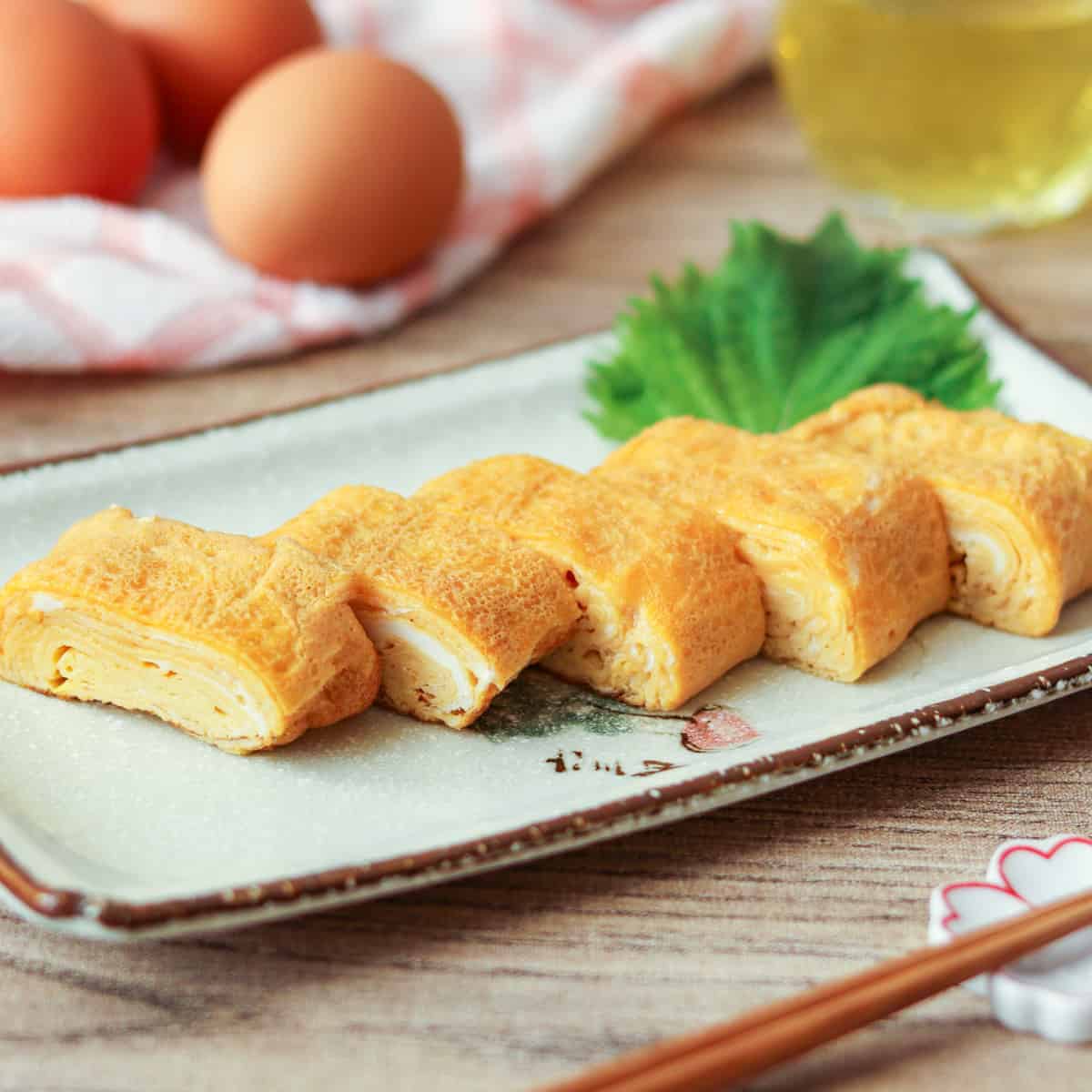
Savory Tamagoyaki (Kansai-Style Japanese Rolled Omelet)
Ingredients
- 3 large eggs (about 2.1 oz/60 g each, including shell)
- a pinch of salt
- ½ tsp soy sauce
Instructions
- Crack eggs into a bowl and beat them with salt and soy sauce.
- Dip a small piece of folded paper towel in oil, then apply it to a pan. Heat the pan over high heat. Once the pan is hot, pour about a quarter of the egg mixture (for 2 servings) into the center of the pan.
- As soon as the mixture begins to set, shape it into a rectangle (approximately 5.7 inches/14.5 cm wide and 7 inches/18 cm long). If there are large air bubbles, pierce them and fill the holes with a small amount of the egg mixture.
- When the mixture is almost set but still slightly runny, roll it several times using chopsticks, folding it from front to back.
- Move the rolled egg to the front of the pan. Apply oil from the small folded paper towel to the pan, and pour an equal amount of egg mixture as in step 2 into the center of the pan.
- Repeat the same process as steps 3 to 5 until all of the egg mixture is used, increasing the layers of the rolled egg. Each time you pour the egg mixture, use chopsticks to lift the rolled egg, allowing the mixture to spread underneath it.
- Once it is done, remove it from the pan before it overcooks from the residual heat.
- (Optional) Place it on a sushi mat or paper towel and shape it nicely.
- Cut it into 1-inch (2.5 cm) pieces.
Notes
- Here, I’m making tamagoyaki using a small frying pan because I want those who don't own a 'tamagoyaki pan' (rectangular or square frying pan) to still be able to enjoy tamagoyaki. If you are enthusiastic about making this dish regularly, I highly recommend purchasing one. For more details about tamagoyaki pans, please refer to the information provided above.
- You can store it in the refrigerator for up to 2 days.

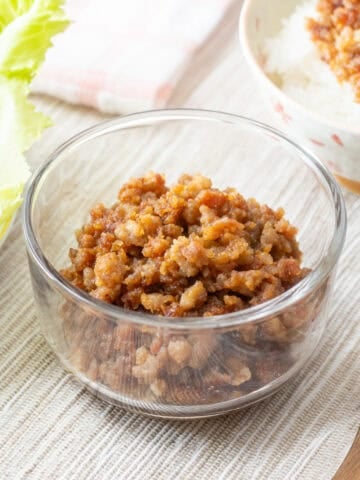
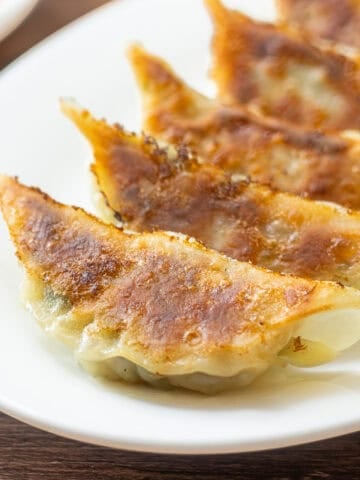
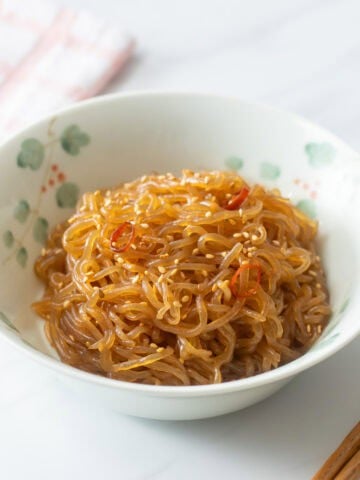
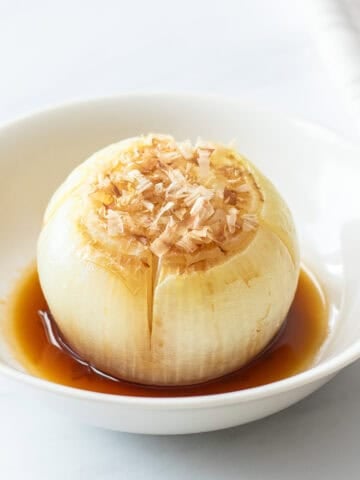
Leave a Rating and a Comment